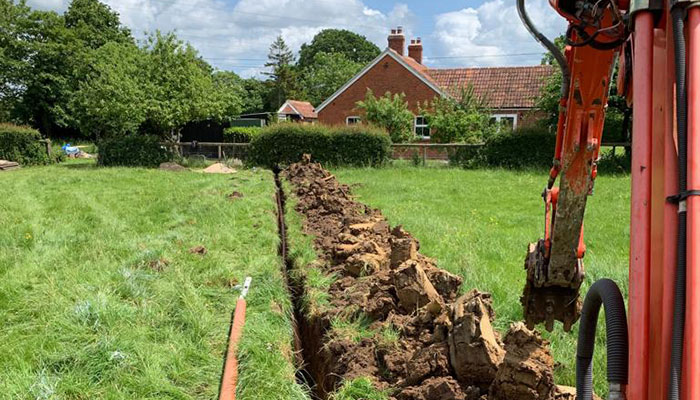Throughout the UK, sewage treatment plants and septic tanks are used by residential and commercial properties to safely process wastewater. Essentially, they allow properties to process their water independently from the public sewers, meaning it can be recycled. In some instances, a soakaway is also required. In this post, we answer the question, do I need a soakaway?
What is a soakaway?
Generally speaking, a soakaway is something that deals with excess or foul water in a drainage system, designed to aid surface water issues in both commercial and residential properties. The pipe running to a soakaway will either come directly from an area on the property where there is an overflow of surface water or from a private system such as a septic tank or sewage treatment plant. In this post, we discuss soakaways and sewage treatment plants specifically.
Legally, sewage treatment plants do need soakaways. They are one of the few legal remaining methods for disposing of treated wastewater from a septic tank, as by the new official Binding Rules, water is not allowed to be released into a watercourse or ditch.
What does a soakaway look like?
Soakaways for sewage treatment plants look like a series of perforated pipes laid in trenches in an area of land around the property, usually a garden or a field. They are sometimes called ‘drainage fields’. The area around these pipes is covered with stones or gravel and turf, with the treated foul water discharged into this land.
What are the benefits of a soakaway?
The aim of the drainage field is to allow wastewater to trickle down through the gravel so that bacteria will form on the gravel, helping to remove contaminants from the water prior to it entering the ground. As well as providing land drainage, they also provide groundwater recharge. Soakaways can prevent flooded and waterlogged lawns, and provide volume reduction and peak flow attenuation. Furthermore, they provide a solution to replenishing the groundwater, contributing to creating more sustainable spaces.
British Water has recently produced a new guide for discharging wastewater to the ground. The guide is for specialists, architects, builders, ground workers, and anyone discharging water to the environment. It provides the best practice for discharging wastewater. Download the guide here.
We hope you found this post on ‘Do I need a soakaway?’ useful. At Proseptic, we specialise in providing a reliable, professional service for all commercial and residential drainage systems. If you have any questions regarding soakaways or surface water drainage, contact a member of our team.
